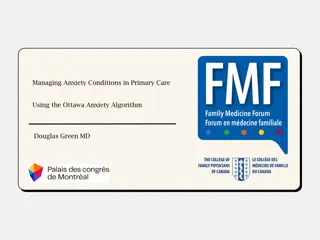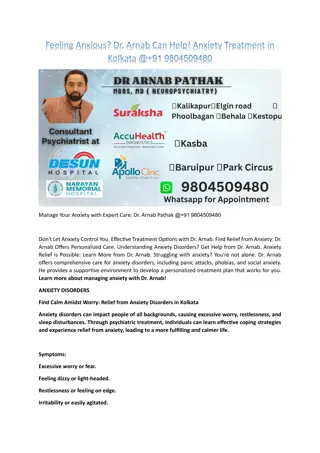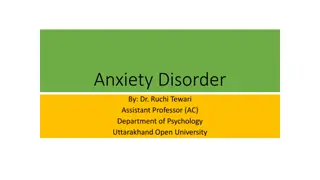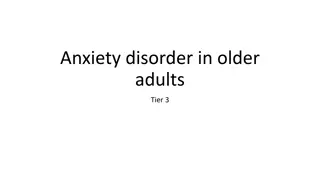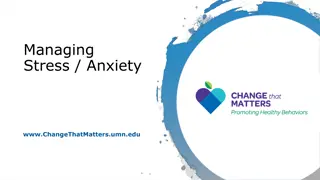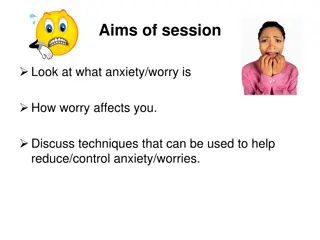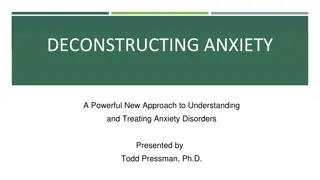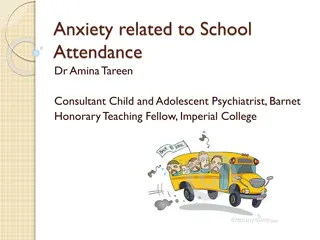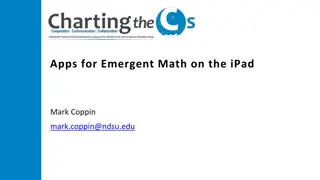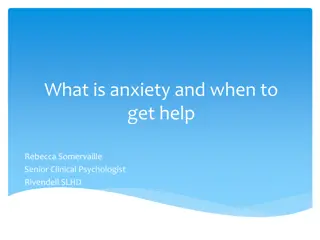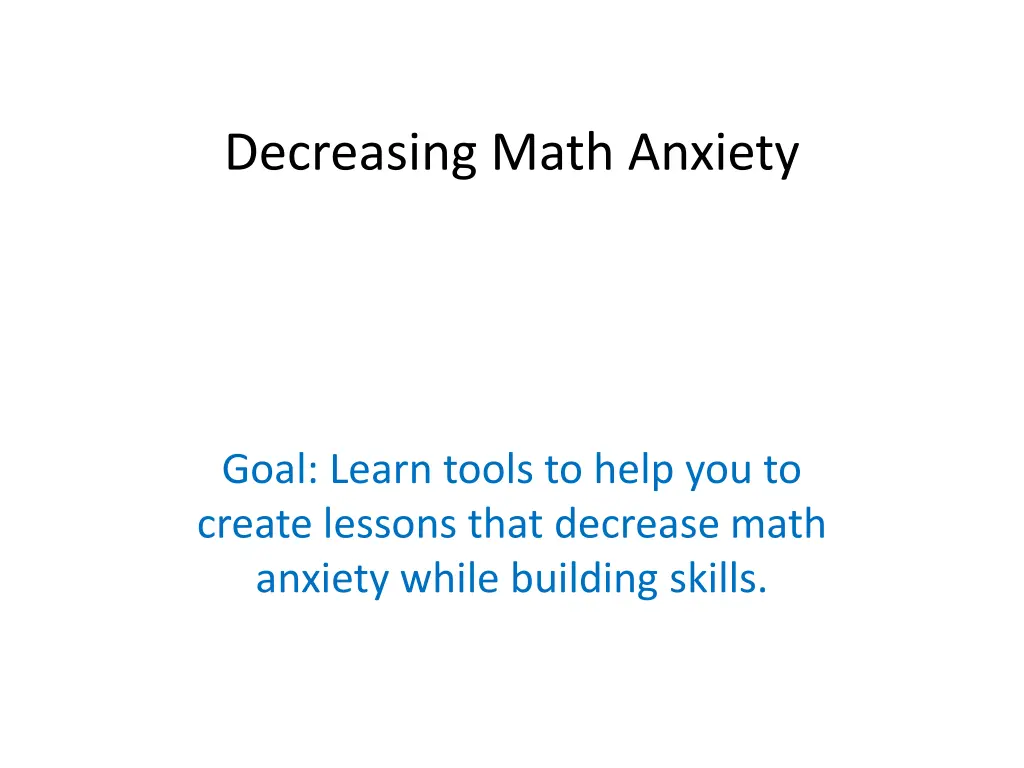
Tools for Decreasing Math Anxiety and Building Skills
Discover effective strategies and tools to create math lessons that reduce math anxiety while enhancing skills. Explore warm-up activities, direct instruction methods, and independent work approaches to empower students in overcoming math challenges.
Download Presentation

Please find below an Image/Link to download the presentation.
The content on the website is provided AS IS for your information and personal use only. It may not be sold, licensed, or shared on other websites without obtaining consent from the author. If you encounter any issues during the download, it is possible that the publisher has removed the file from their server.
You are allowed to download the files provided on this website for personal or commercial use, subject to the condition that they are used lawfully. All files are the property of their respective owners.
The content on the website is provided AS IS for your information and personal use only. It may not be sold, licensed, or shared on other websites without obtaining consent from the author.
E N D
Presentation Transcript
Decreasing Math Anxiety Goal: Learn tools to help you to create lessons that decrease math anxiety while building skills.
Agenda Warm-Up Ideas (5 minute activities) Direct Instruction Tell/Write Goal Independent Work Productive Struggle Exit Slip Formative Assessment
High Achievers can Think Flexibly High achievers use number sense. Approach 19 + 7 by changing the problem into 20 + 6, or 20 + 7 - 1 Low achievers do not. Approach 21 16 by starting at 21 and counting down 16 place significantly more straining (Gray & Tall 1994)
Evaluate this in your head. When you have the answer, put your thumb up at your chest.
What Pattern Do You Notice? Or Draw the Next Figure
Direct Instruction Deliver new content for 8-10 minutes. Tell students the GOAL. Don t discuss facts (errors will confuse). I Do, We Do, You Do
Simplifying Expressions Goal By the end of class, you will know what like terms mean and how to use them to simplify an expression.
Like Terms Like terms are terms with the same variable part.
Independent Work Focus on having students putting pencil to paper for 5-15 minutes. Embrace mistakes, showing work, and skipping difficult items to come back. Could be work just learned, review from previous days, remediation, or IEP goals work. Good time for individual check-ins (homework, quiz, exit ticket reviews).
Simplify these expressions. 1. 2. 3. 4.
Other parts of lesson Activity Discussion Performance Task Manville share => curriculum => math performance tasks Project Computer Work Khan Academy, IXL, VMath
What Does Research Say? Some math anxiety is related to teaching techniques that emphasize the speed at which students arrive at correct answers (Geist, 2010; Jackson, 2008; Haralson 2002) Math anxiety has been linked to teaching techniques that emphasize competition among students instead of cooperation (Geist, 2010; Woodard, 2004; Haralson, 2002; Curtain Phillips, 2001) Prepare students for high-stakes testing by regularly administering timed tests (Cavanaugh 2007) Student understand more complex functions when they have number sense and deep understanding of numerical principles, not blind memorization or fast recall (Boaler, 2009)
Exit Ticket Great way to revisit daily goal. Can students show learning? Assess if students learned topic. Use this data for next day instruction/ individual check in.
Your Exit Ticket Write one idea that was discussed today that you could incorporate into your class in the next week. How do you think that might help your students? (Yes, please answer in complete sentences.)
If you havent gotten anything wrong today, I m sorry. That means I m not doing my job. Research shows that making mistakes in math fires synapses that increase learning. (Moser et al., 2011)
References Boaler, J. (2009). The Elephant in the Classroom: Teaching Students to Learn and Love Maths. London: Souvenir Press. Cavanaugh, S. (2007). Understanding Math Anxiety. Education Week, February 21, 2007. Retrieved from http://www.edweek.org. Curtain-Phillips, M. (2001). The Causes and Prevention of Math Anxiety. Retrieved from http://www.mathgoodies.com/articles/math_anxiety.html. Gray, E. M. & Tall, D. O. (1994). Duality, ambiguity and flexibility: A perceptual view of simple arithmetic. Journal for Research in Mathematics Education, 25, 2, 115 141. Geist, E. (2010). The Anti-Anxiety Curriculum: Combating Math Anxiety in the Classroom. Journal of Instructional Psychology, 37(1). Retrieved from http://www.faqs.org/periodicals/201003/2011820081.html. Haralson, K. (2002). Math Anxiety: Myth or Monster? Presentation at National Council of Teachers of Mathematics Central Regional Conference. Paducah, KY, October 2002. Retrieved from http://apbrwww5.apsu.edu/haralsonk/ppt/anxiety_presentation[paducah].ppt. Jackson, E. (2008). Mathematics Anxiety in Student Teachers. Practitioner Research in Higher Education, 2(1), 36-42. Moser, J. S., Schroder, H. S., Heeter, C., Moran, T. P., & Lee, Y. H. (2011). Mind Your Errors Evidence for a Neural Mechanism Linking Growth Mind-Set to Adaptive Posterror Adjustments. Psychological Science, 0956797611419520. Sousa, David A. The Primacy/Recency Effect. Dataworks Educational Research, DataWORKS Educational Research, 18 May 2016, dataworks-ed.com/blog/2014/08/the-primacyrecency-effect/.

